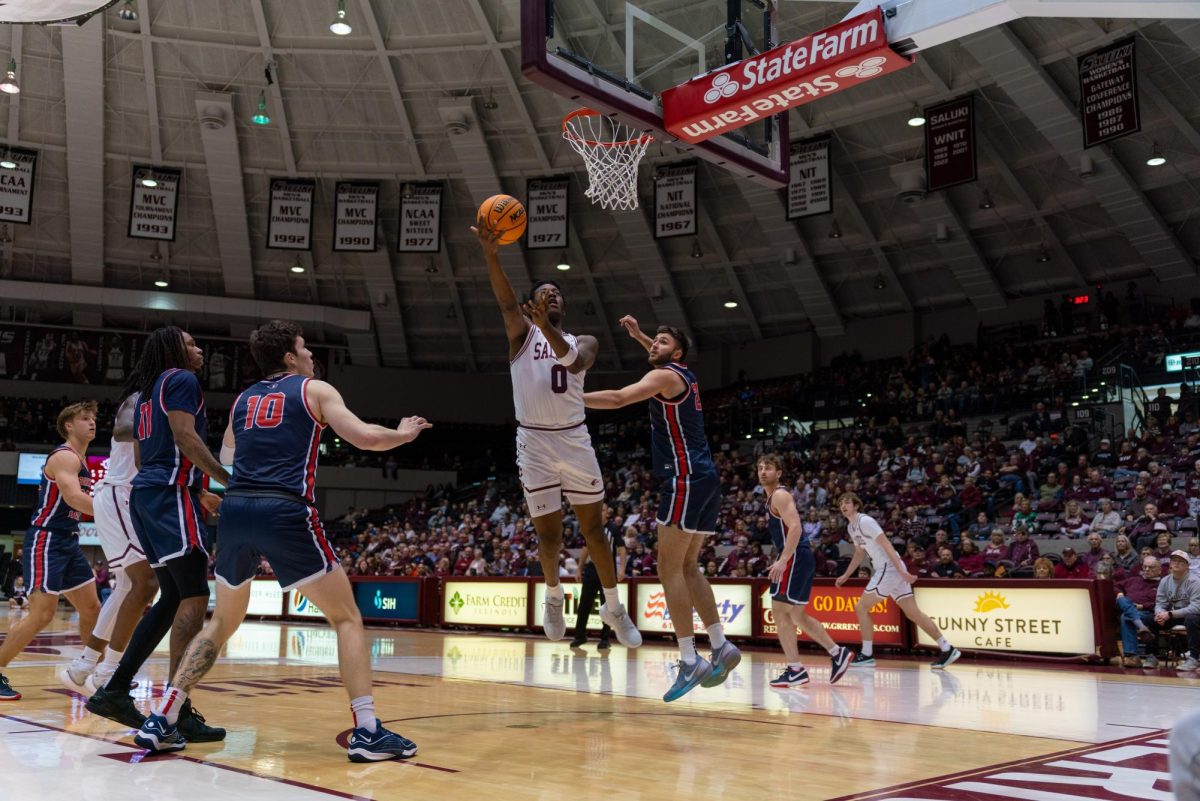Education essential to concussion treatment in football
September 12, 2012
Some of the most important things in the game of football can’t be taught with X’s and O’s.
Lee Land, assistant athletic director for sports medicine at SIU, said he thinks education is the key to preventing and treating concussions, which have become a big problem for football players across all levels.
“The knowledge of being able to make educated choices is a big part (of concussion safety),” he said.
Advertisement
Concussions have always been a huge concern with those involved in football, but suicides in recent years by former NFL players Dave Duerson and Junior Seau have made the issue a national concern.
Duerson died in Feb. 2011 from apparent self-inflected gunshot wounds to the chest. He sent a text message to his family beforehand, which requested that his brain be used for research.
The Boston University School of Medicine confirmed Duerson developed chronic traumatic encephalopathy, a disease linked to brain damage from serial concussions. The disease produces the only known form of preventable dementia.
Seau died in May, also from self-inflicted gunshot wounds to the chest. His ex-wife said he suffered several concussions throughout his football career. He did not leave a note requesting brain research.
His family, however, donated some of his brain tissue to the National Institutes of Health. The NIH does not intend to release the study’s findings, per request by Seau’s family.
In April, the NFL launched Heads Up Football, a program that emphasizes player safety particularly with concussions. It has set the tone for football and other sports leagues across the country that have increased concussion education.
Dan Koester, Carbondale High School’s head football coach, said he is fortunate that no concussions have been serious enough for players to sit out in his five seasons on the job.
Advertisement*
Koester said the players take concussion tests before the season starts, and they receive evaluations from trainers after violent collisions. The trainers have final say on when a player is ready to return to the field, he said.
Koester said the players are equipped with the same helmets the NFL uses.
“We spend the extra money to make sure our kids are safe,” Koester said.
Since the concussion issue in football has become more publicized, many parents have resorted to restricting their children from the gridiron.
Bill Greene, whose son Corbin plays on the fifth and sixth grade Carbondale Junior Terriers football team, is not one of those parents. He said although he has some paranoia when it comes to his son on the football field, he would not keep him from playing.
“He wanted to play football really badly, and I didn’t want to deny him the experience because I was afraid,” he said. “I thought, maybe if he got some experience and learned how to do it the right way, he could have fun in a safe environment.”
He said he credits the Junior Terriers coaches for their education in player safety. He said the coaches make the kids run laps if they try to tackle head first.
Greene, who played high school football, said the advancement in equipment has made him more comfortable with his son playing a contact sport.
He makes sure Corbin has his gear on the proper way, which he said goes a long way toward injury and concussion prevention.
“My number one rule for him is, if you have the helmet on, then the chin strap is on tightly and the mouth piece is in,” he said.
Land said he thinks one of the most important ways to prevent sustained concussion problems is to address the situation when it arises.
When a player is suspected to have endured a concussion, he said he asks the player questions first, then he looks for the signs.
Concussion symptoms include headaches, nausea, memory loss, photophobia and sensitivity to light and sound.
Land said he has not seen anyone step away from a football game because of concussions since he has been at SIU. He said there have been five or six players who suffered concussions or concussion-like symptoms so far this season.
Though he said he does not foresee concussions becoming less of an issue for future football, he thinks proper education, treatment and advanced equipment can lead to lower frequencies of them.
He said one goal is for his players to make sure they can lead a normal life after their football careers.
“The majority of these people are going to go out and get a job using the education they got here, not the football they got here,” he said. “To jeopardize their livelihood down the road for a football game now, because of concussions, is something nobody wants to see.”
Advertisement








